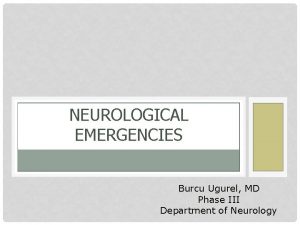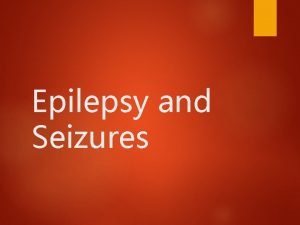Hippocampal Neural Stem Cell Grafting after Status Epilepticus

- Slides: 1

Hippocampal Neural Stem Cell Grafting after Status Epilepticus Alleviates Chronic Epilepsy and Abnormal Plasticity, and Maintains Better Memory and Mood Function Hattiangady Bharathi, Kuruba Ramkumar, Shuai Bing, Grier Remedios, Shetty Ashok K 1 Institute for Regenerative Medicine, Department of Molecular and Cellular Medicine, Texas A&#x 00026; M University College of Medicine, College Station, TX, USA. 2 Research Service, Olin E. Teague Veterans&#x 00027; Medical Center, Central Texas Veterans Health Care System, Temple, TX, USA. 3 Department of Surgery (Neurosurgery) Duke University Medical Center, Durham, NC, USA. 4 Research and Surgery Services, Durham Veterans Affairs Medical Center, Durham, NC, USA Figure 6. Neural stem cell (NSC) grafting after SE promoted a higher level of normal neurogenesis and reduced the aberrant neurogenesis in the DG during the chronic epilepsy phase. The top panel shows the doublecortin (DCX)-positive newly born neurons in the DG of animals belonging to the control (A 1), SE only (B 1), and SE+NSC (C 1) groups. A 2, B 2, C 2 are magnified views of regions from A 1, B 1, C 1, respectively. Note the dramatically Aging and Disease, 2020, 11(6), 1374 -1394. DOI: 10. 14336/AD. 2020. 1020 declined normal neurogenesis and prominent aberrant neurogenesis in the dentate hilus (DH) of SE only group(B 1 -B 2) and a preserved dentate neurogenesis and reduced abnormal neurogenesis in the SE+NSC graft group (C 1 C 2). The bar chart D compares the number of DCX+ neurons in the dentate gyrus (DG) between the three groups. Note a substantially declined normal dentate neurogenesis in the SE only group, in comparison to the na&#x 000 EF; ve group and a much higher level of neurogenesis in the SE+NSC group (D) at ~9 months post-SE. The panel E-G shows prox-1+ dentate granule cell in the DH of animals belonging to the na&#x 000 EF; ve control (E), SE only (F), and SE+NSC (G) groups. The bar chart H compares the number of prox 1+ cells in the DH between

